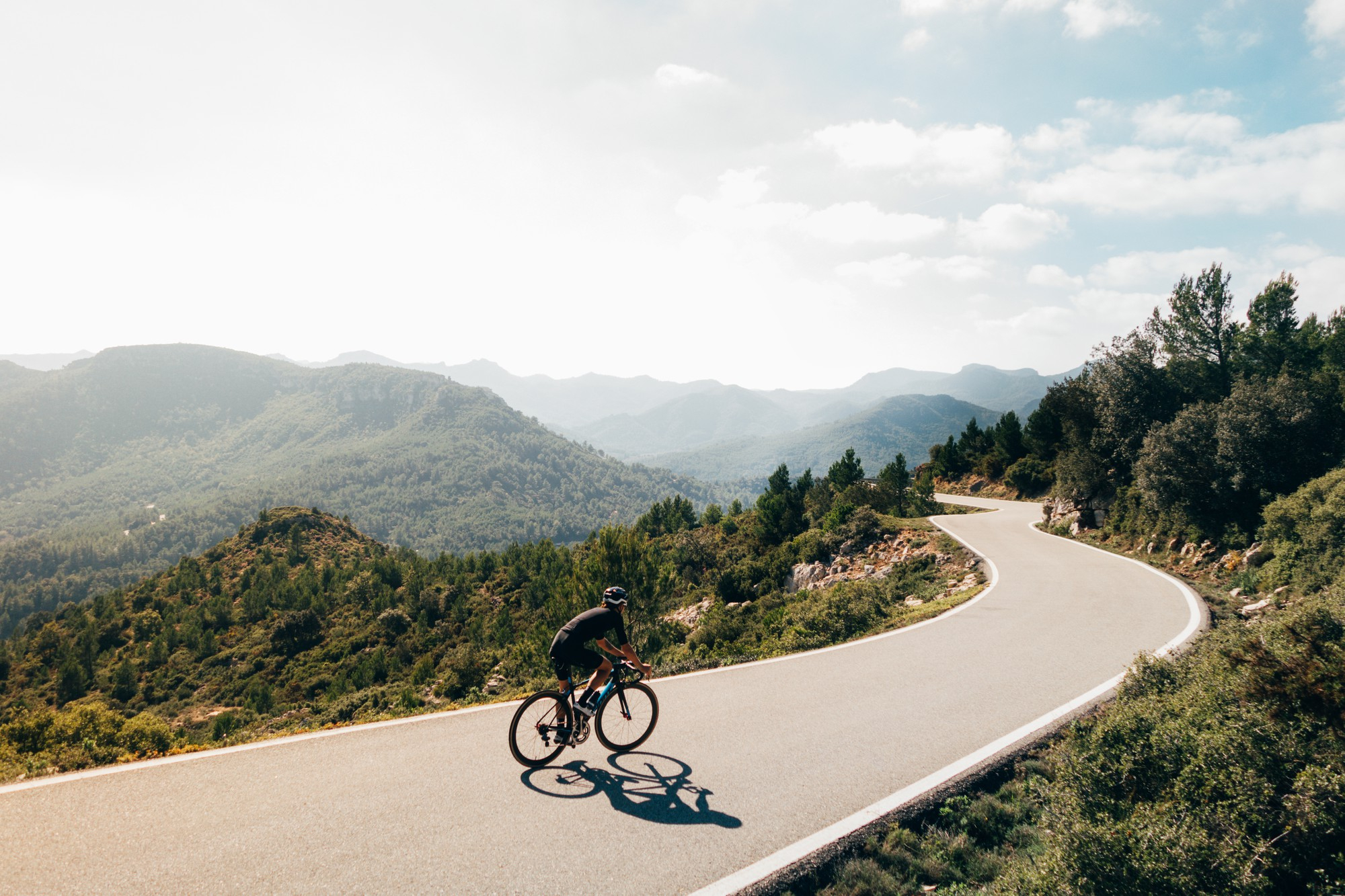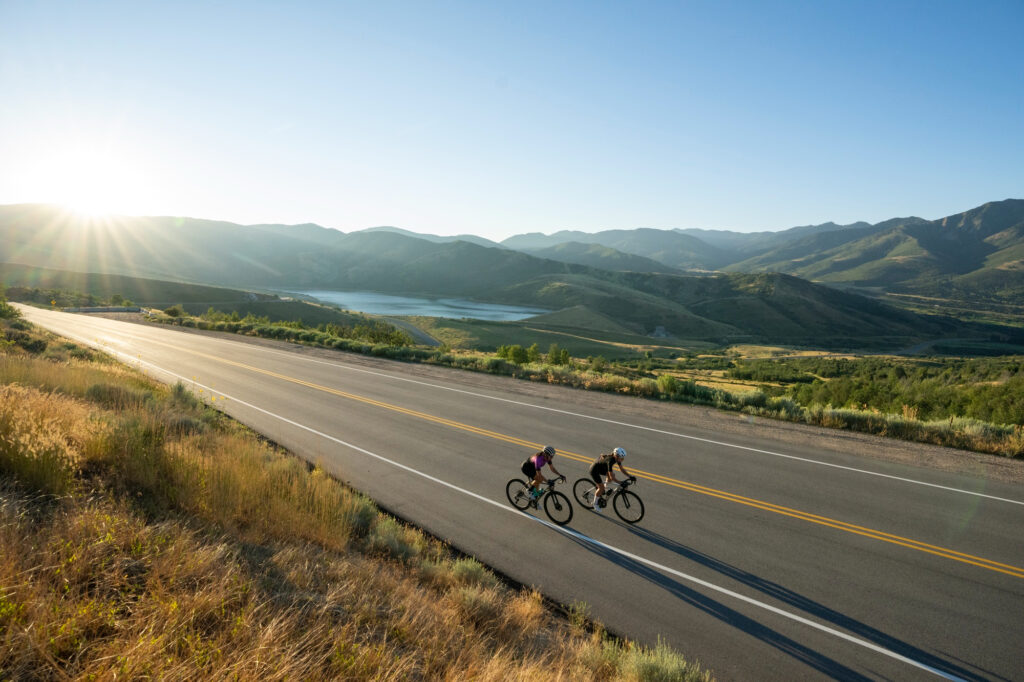Contact
Tööstuse 43, Tallinn, Estonia
Store: +372 508 3309
Workshop: +372 5301 8568
Tähesaju tee 31, Tallinn Estonia
Store: +372 5885 7752
Workshop: +372 5301 6938
Info: +372 508 3309

Article from jooksja.ee magazine
Author: Andres Lekko
Happy cycling enthusiasts runners! Winter is over, probably enough skiing kilometers have been accumulated, and the last curls can be done in shorts and spring sun on Tallinn’s song square. Let’s start with summer stories again.
The scenario is as follows. Spring is here, but vitamin D reserves are hopelessly depleted? A beautiful bike has been serviced and cared for many times, but still on the wall? The city government exists, but the street still hasn’t been cleaned? The weather is promising, but in the meantime reminding us of the temperate zone? You have decided to go closer to the sun, to a warm country. And that’s not all, you’ve also decided to use a bike there. That’s what I’m writing about this time.
In general, a person chooses trips based on where he wants to go and what he wants to see. Nor is there anything dazzlingly different when traveling with a bicycle. The difference is when there is a desire to train first of all.
We have been able to travel freely for 25 years, and Estonians have enough information to find their own destination. I would recommend focusing on some nuances when choosing a place for a training camp – especially traffic density and bike infrastructure.
I’ve done camps in different places and each one has had it’s downsides. Although the traffic is unrealistic for safe training on a bike alone, you have to go through a crazy maze to get out of the village, grocery stores are far away or the campsite is completely on top of a mountain. All this can be excluded according to your wish. And it is not for nothing that certain areas for spring camps have developed for Estonians in Southern Europe: the southern coast of Spain, Mallorca, Tuscany, a little bit of Croatia. My favorite and first love is the southern shore of Lake Garda in Italy.
You should definitely pay attention to the condition of the roads when looking for information. Are they wide enough that cars can’t run over you if you’re driving alone? In my camps, I secured the group by bus, so we didn’t have these problems, but there were absolutely other problems. Also, are there enough of you to keep the camp from getting boring? Are there enough Estonian-like flats so that the red color showing the pulsometer numbers doesn’t run out with one bearing?
A local reliable bike shop is also part of the bike infrastructure. The opportunity to go camping without needing help with your bike sounds like a lottery win. But if things don’t go so well, to solve this problem, it’s great if there is a sales point near the campsite manned by a specialist with golden hands, where you can get help when you run out of skills.
More and more local southerners have also realized the possible arrival of northerners and have opened bike rental points, where even the most demanding sports fans can find a Bolt to take away from their own dear home wall. This activity, of course, requires very serious trust and a strong background check. It’s not very pleasant if you have to ride a bike designed for a 1.5 meter person when you’re two meters tall. I’m not even going to incite class hatred about what happens when a Di2 electronic transmission owner is offered a bike with a mechanical transmission.

I am focusing here on the hypothesis that you use your bike in the camp/trip. You’ve done all kinds of full, simple, general and spring maintenance at your favorite workshop anyway, haven’t you? Now you go to the same workshop and have your bike packed for the trip. Of course, if you don’t have five thumbs growing out of your wrist, you can also do it yourself at home. But you can still take a kilo of candy, a pint of beer or three very long kisses to your favorite mechanic, because from him you can get an excellent and often absolutely exactly the right size box for the load, as well as a ton of packaging softeners and cable ties.
When packing the bike, the protruding parts must be separated: pedals, saddle and handlebars. The pedals run in opposite directions, so make sure you turn the key counterclockwise when unscrewing the right (gear side) pedal, and clockwise for the left. It is also good to remember this formula for later assembly, so as not to try to install the pedals on the wrong crank (I wouldn’t mention it if I hadn’t seen the efforts of such strong-willed people myself).
It is ideal to remove the handlebar so that the stem remains in its position on the fork. In this case, there is no need to adjust the neck bearings when assembling the wheel. Since you have been looking for the ideal riding position on your bike for years or even decades (and finally found it), it is worth noting its position in relation to the stem before removing the handlebars. Exactly the same applies to the previous marking of the saddle height. The good thing about transporting a Shimano Di2 electronic bike when removing the saddle is that it is worth disconnecting the battery for transport, and since the latter is mostly a seat tube, you can kill two birds with one stone.
Next, the bike needs to be packed with cushions so that no part rubs against another during the journey. To keep the bike in the box more tightly, it is also practical to pack all your sports clothes and helmet-shoes in one box with the bike. When traveling by plane, it also helps to avoid excess luggage, since with a bike ticket you have already covered the weight of two bikes anyway. After all, you’re not carrying a radiator with you, but an ultra-light carbon one? And if the logistics of the world’s best airports should decide to send your bike to any other airport, it wouldn’t be smart to do anything in camp without a bike in colorful clothes and a helmet anyway. When you get there, you repeat all the actions you did at home exactly backwards: take off the battery cable back, saddle back, handlebars back, cushions – packages off, pedals on, tires full.

Here you can easily do yourself a disservice instead of a favor. Isn’t it awesome when a rifle bought for the last year’s salary flies like the wind? Five hours in the sun and it’s still not cold? The mountain is upside down in the clouds, but I can drive up there, right? If the neighbor-Pets can handle a lot and quickly, I can handle even more and faster.
The simplest suggestion is to use peasant wisdom – do as you would do at home. During the first week, drive calmly for a few hours and do not calculate any heat coefficients. If the trip is for a week, so be it. I did the human experiments when conducting my first lunch camps, 1000 km per week was easy. When I got home, some of the engines had been shut down for the season. I was a bit lucky that the casualties caused by their ignorance were paid by the athletes of the other club. Forgive me, Jüri Kalmus from Elva, I didn’t do it on purpose! If the camp is longer, of course you can already do “real sports” in the second or third week. But one thing is certain – it is almost impossible to undertrain in the south, the possibility of overtraining is almost always there.
It’s not much different from packing for a camping trip. Only bought spices, fruits, drinks, sauces and souvenirs can be packed together with the bike for cushioning. And a glass of red wine for the favorite mechanic at home. You could easily take this load directly from the airport to the workshop, because it was rallied in the camp so that the chain is muddled, the brake pads and tires are worn out, and the tsetse fly of the warm country also needs to be washed off. Let the mechanic hand over the other crucifixes you brought with you, permission to take the red wine home (because nobody drinks at work these days). And the packaging will also be disposed of, and a beautiful, clean and tidy bike will appear on the wall of your house again, because after the camp, it may arrive…
Even though Estonia is beautiful, the air is clean and the birds are singing, you have arrived in the temperate zone. Here, the sun doesn’t shine for two days in a row, and the rain usually doesn’t stop in half a day. The wind blows because most Estonians use sails at sea, not bicycles on the road.
Modest depression is easy to come by. But again – peasant wisdom. If Estonian conditions require it, take out the dirt bike again and drive 25 km/h. Nothing will happen to your trained muscles. I myself would go for a quick bike ride on the first beautiful day to stretch out the kaif as long as possible for the whole summer.
A little getting used to the rhythm of life, work and other things here, and the first competitions will come. You are ready for them!
About the competition in the next chat rooms. Until then, have a nice spring time on your bike!